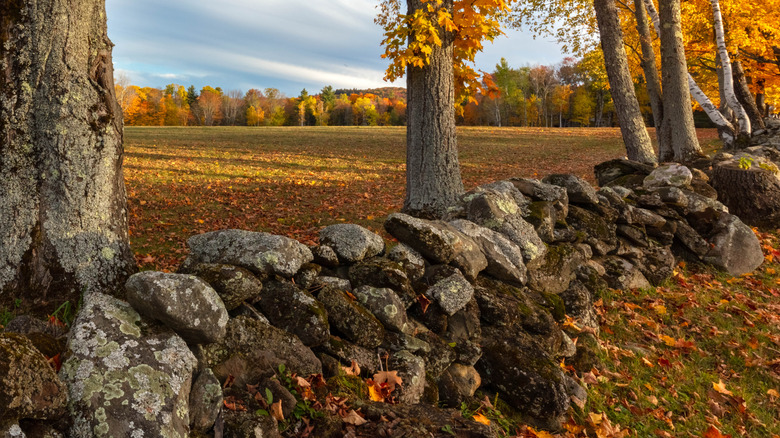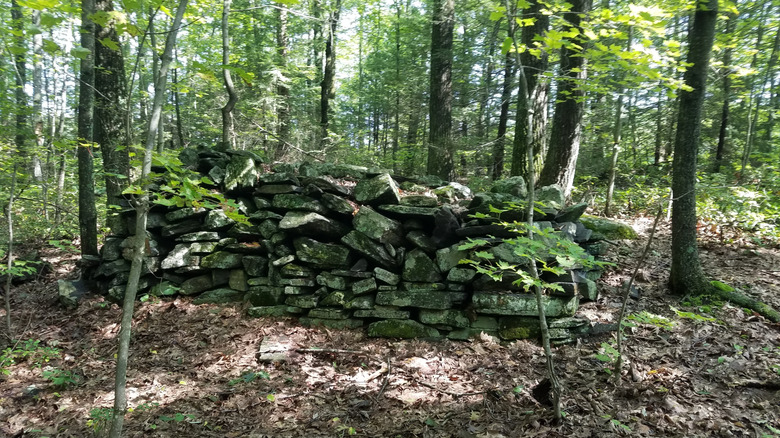
As the birthplace of colonial America, you might be wandering through a New England town and unexpectedly stumble upon a landmark or house that dates back centuries. Head to Wickford, Rhode Island's seaside village full of charm, and you're likely to spot a few restored 18th-century homes. Take a coastal road trip through New England's seaside towns, and you'll see harbors that have welcomed settlers since the 1600s. If you venture into the forests and fields of New England, it's common to come across
stone walls at random, overgrown with moss and lichen, crumbling and signaling a time when they had a purpose that's since been forgotten or abandoned. According to UConn Today, there are around 240,000 miles of these old stone walls around New England, which are as much a part of the region's landscape as its bursting fall foliage.
Next time you see a stone wall in the woods of New England, stop for a moment to appreciate what is a fascinating amalgamation of glacial geology, past agricultural practices, and years of labor. Some walls date back to the early 1600s, though most come from the 18th and 19th centuries. Almost all of them were built by European settlers who owned and worked on farms. People coming to New England to make a living did so by clearing land and establishing farms. As farmers tilled the land, they discovered countless stones scattered throughout the soil. The abundance of stones is particular to New England, since this was where glacial activity deposited the hard, crystalline rocks at least 15,000 years ago. Needing to move the rocks somewhere, the farmers began stacking them to form walls, serving the dual purpose of clearing the fields while creating visual boundaries for their property.
Read more: Unsettling Reasons You May Want To Avoid Taking A Cruise
The Lasting Legacy Of New England's Stone Walls

When you come across the stone walls of New England today, most of them are quite weathered, having been battered by nature and, in some cases, even torn down by humans to be sold. To be fair, the stone walls have lost their utilitarian purpose — because of both changing standards and a shift away from agricultural work — and around many of them, forests have regrown where land was once deforested to make fields. However, many see an important cultural value in these walls. In Northern Woodlands Magazine, Robert "Thor" Thorson, a geologist specializing in New England's stone walls, says, "Stone walls have become the binding threads that glue our regional culture together."
The walls have inspired numerous poets and artists, from Robert Frost to Andy Goldsworthy, who made his own fieldstone wall at the Storm King Art Center, one of America's largest outdoor sculpture parks. Thorson has established an organization to protect the walls called the Stone Wall Initiative, which provides free information about the walls, brings awareness to their conservation, and catalogues their locations. You're likely to encounter one of the stone walls in any of the New England states and even parts of New York.
Ready to discover more hidden gems and expert travel tips? Subscribe to our free newsletter for access to the world's best-kept travel secrets.
Read the original article on Islands.













